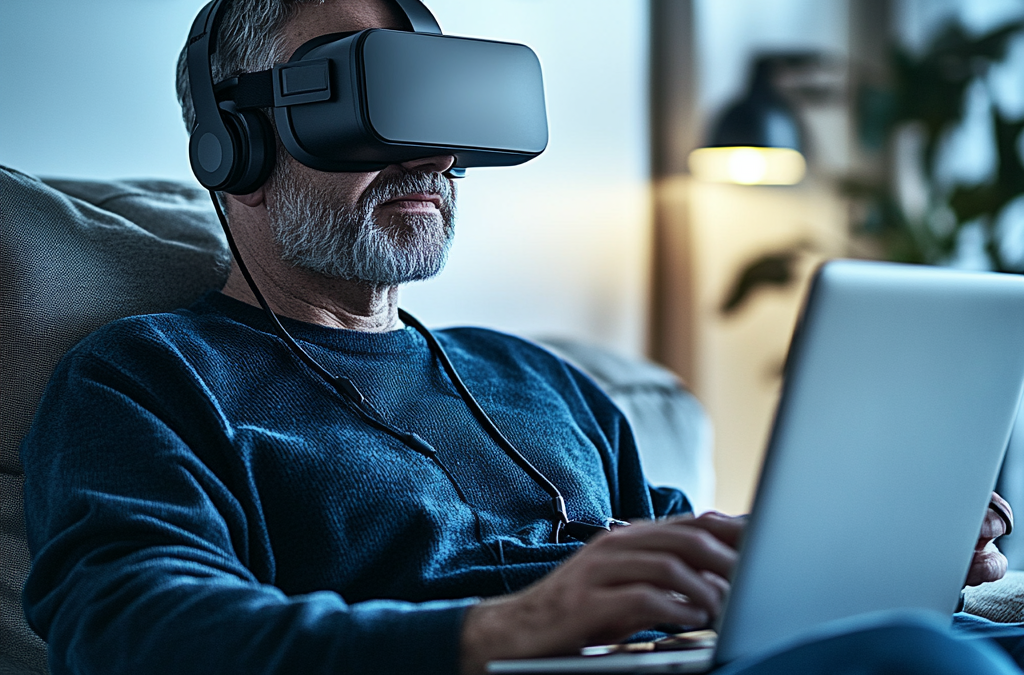Introduction
Chronic pain and the need for effective rehabilitation strategies present significant challenges in healthcare. Traditional methods often involve pharmacological interventions, which may lead to side effects and dependency. In recent years, Virtual Reality (VR) therapy has emerged as a promising non-pharmacological approach, offering immersive experiences that can alter pain perception and enhance rehabilitation outcomes.
Understanding Virtual Reality Therapy
Virtual Reality Therapy utilizes computer-generated environments to immerse users in interactive, three-dimensional experiences. By engaging multiple senses, VR creates a sense of presence, allowing individuals to interact with virtual scenarios that can be therapeutic. This technology has been adapted for various applications, including pain management and physical rehabilitation.
VR Therapy in Pain Management
Clinical studies have demonstrated the efficacy of VR therapy in reducing pain intensity:
- Acute Pain Relief: Research has shown that VR can effectively distract patients during painful procedures, such as wound care for burn victims, leading to reduced pain perception.
heal.nih.gov
- Chronic Pain Management: An umbrella review highlighted the successful application of VR in controlling both acute and chronic pain, suggesting its potential as an alternative therapy for pain management in various settings.
pmc.ncbi.nlm.nih.gov
- Cancer-Related Pain: In hospitalized cancer patients experiencing moderate to severe pain, a 10-minute immersive VR intervention resulted in improved self-reported pain scores compared to a two-dimensional guided imagery experience.
pubmed.ncbi.nlm.nih.gov
Mechanisms of VR-Induced Pain Reduction
The pain-relieving effects of VR therapy can be attributed to several mechanisms:
- Distraction: Immersive VR experiences divert attention from pain, reducing the subjective experience of discomfort.
- Neuroplasticity: Repeated VR sessions can promote neural adaptations, potentially altering pain pathways and reducing chronic pain over time.
- Emotional Modulation: VR environments can induce positive emotions and relaxation, influencing pain perception and reducing anxiety associated with chronic pain conditions.
VR Experiences for Training and Rehabilitation
Beyond pain management, VR therapy has been effectively integrated into rehabilitation programs:
- Motor Function Rehabilitation: VR systems have been extensively used in physical therapy to enhance motor control and functional recovery. For example, stroke patients engaging in VR-based rehabilitation have shown significant improvements in motor functions.
pmc.ncbi.nlm.nih.gov
- Balance and Gait Training: Individuals with Parkinson’s disease participated in a 12-week VR rehabilitation program, resulting in greater improvements in balance and gait compared to conventional physical therapy.
pmc.ncbi.nlm.nih.gov
- Cognitive Rehabilitation: VR interventions have demonstrated notable enhancements in both motor and cognitive functions, aiding in the recovery of activities of daily living (ADL) in patients with post-stroke cognitive impairment.
pubmed.ncbi.nlm.nih.gov
Duration and Frequency of VR Therapy Sessions
The optimal duration and frequency of VR therapy sessions can vary based on individual needs and specific rehabilitation goals:
- Session Duration: Studies have utilized VR sessions ranging from 20 to 50 minutes. For instance, a study involving VR rehabilitation for balance and gait training progressed from 20 to 50 minutes over an 8-week period, with two sessions per week.
pmc.ncbi.nlm.nih.gov
- Frequency: Consistent and regular VR therapy sessions are associated with sustained improvements. In the case of Parkinson’s disease rehabilitation, a 12-week program with regular sessions yielded significant functional gains.
pmc.ncbi.nlm.nih.gov
- Treatment Duration: Longer treatment durations have been linked to more substantial and lasting improvements. For example, an 8-week VR program led to significant enhancements in motor and cognitive functions in stroke patients.
pubmed.ncbi.nlm.nih.gov
Timeframe for Observing Rehabilitation Effects
The onset of rehabilitation benefits from VR therapy can vary:
- Short-Term Improvements: Some patients may experience immediate enhancements in motor functions during and shortly after VR sessions, particularly in acute rehabilitation scenarios.
- Long-Term Benefits: Sustained engagement with VR therapy over several weeks has led to significant and lasting improvements in functional outcomes. For instance, a 12-week VR rehabilitation program resulted in greater improvements in balance and gait for individuals with Parkinson’s disease compared to conventional therapy.
pmc.ncbi.nlm.nih.gov
Conclusion
Virtual Reality therapy represents a promising and innovative approach to pain management and rehabilitation. By immersing patients in interactive virtual environments, VR therapy can effectively reduce pain intensity, enhance motor and cognitive functions, and improve overall quality of life. As technology advances and more research emerges, VR therapy is poised to become an integral component of comprehensive pain management and rehabilitation strategies.

